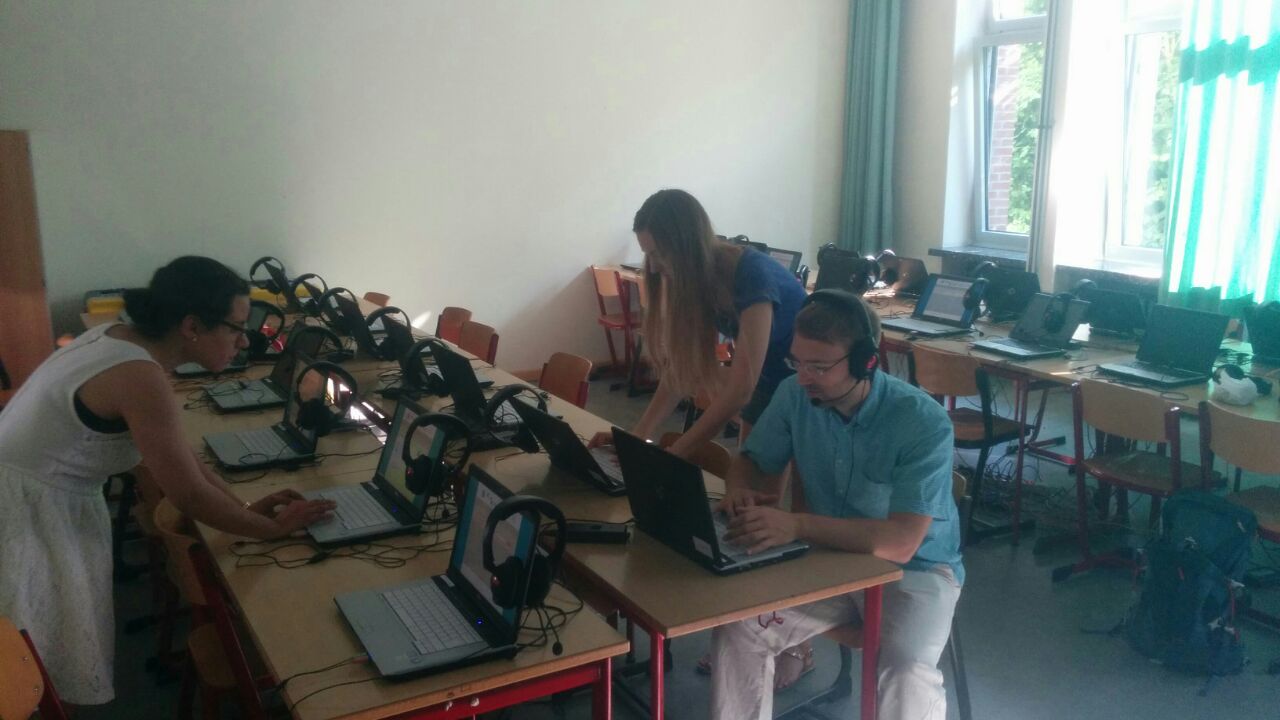After a month of international conferences and dissemination activities, RUB’s main goal in June was to get ready for conducting the first summative evaluation trial in a German school. Together with the school, we determined that July would be a good time in the fractions curriculum for students to learn with the iTalk2Learn program. July is just before this year’s school summer holidays. At this time, students already have a basic understanding of fractions but have not yet mastered the concept of equivalence nor the procedures of reducing and expanding fractions – iTalk2Learn’s mathematical core theme. The maths coordinator of this school was very enthusiastic about iTalk2Learn and convinced several of her colleagues to participate, so we were able to work with four classes with up to 28 students!
Our aim for the summative trials here in Germany is to mirror the UK trials as closely as possible. For example, we work with the same learning and testing materials as our colleagues in the UK do. One exception is the component for procedural practice. While the UK version relies on Maths-Whizz, we adapted Fractions Tutor, an intelligent tutoring system developed at Carnegie-Mellon-University. To ensure that we also closely mirrored the experimental procedure of the UK trials, one of RUB’s team members participated in the UK trials. He closely observed when which step is taken….as we all know the devil is in the details (at least according to a German proverb).
One final important step in our mission to get ready to go to school included further testing of the iTalk2Learn platform. At this stage of the platform development, we mainly focused on identifying and fixing smaller bugs in the iTalk2Learn platform. Once testing was finished, we packed our things and travelled to the school! Fortunately, José Fernandez, our technical expert from BBK, flew to Germany and supported us!

The RUB team is setting up the technical equipment for the first summative trial in Germany
In school
Thanks to the close collaboration with the school, everything was prepared for us when we arrived the day before the start of the first summative evaluation study. We had plenty of time to work on our elaborate technical setup: It included setting up 30 laptops, 30 headsets, the server, our projector, a local area network, and last but not least, the learning material for the children. The mathematics coordinator was very excited about integrating educational technology such as iTalk2Learn in her and her colleagues’ classrooms. She used every minute she had to ask us questions and how she could support us. But not only the maths coordinator was curious about iTalk2Learn: the children were also quite excited once they had sneaked a peak into the classroom, where everything was set up for them.
Finally, the first class came in and we could start with our very first summative evaluation trial. In this first class, students interacted with the full version of iTalk2Learn and enjoyed speaking with program and partly receiving in return a spoken answer. After learning with iTalk2Learn, nearly all students said that they liked working with iTalk2Learn. This confirms what we have often heard already in the formative trials. So, we are quite confident that also in the schools participating in the next trials, children will enjoy learning with iTalk2Learn. With this in mind the iTalk2Learn mission continues.


